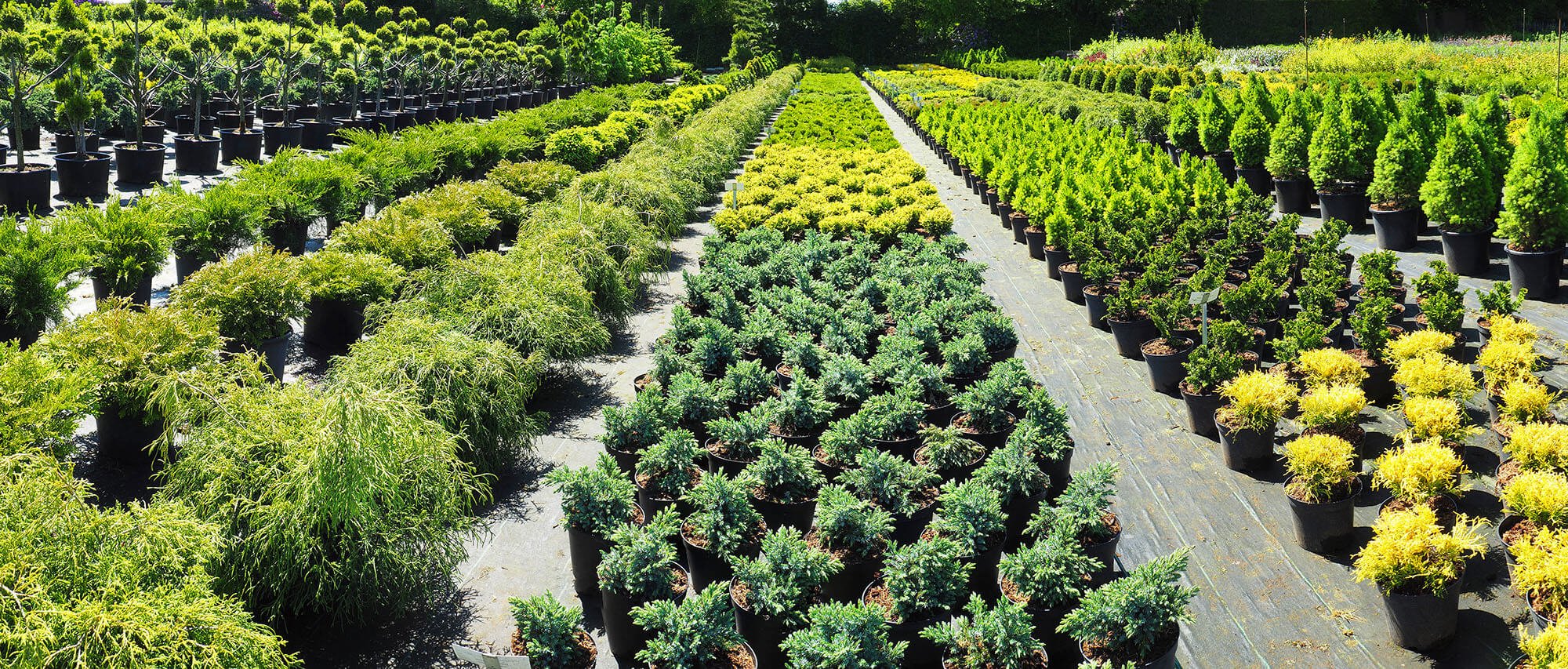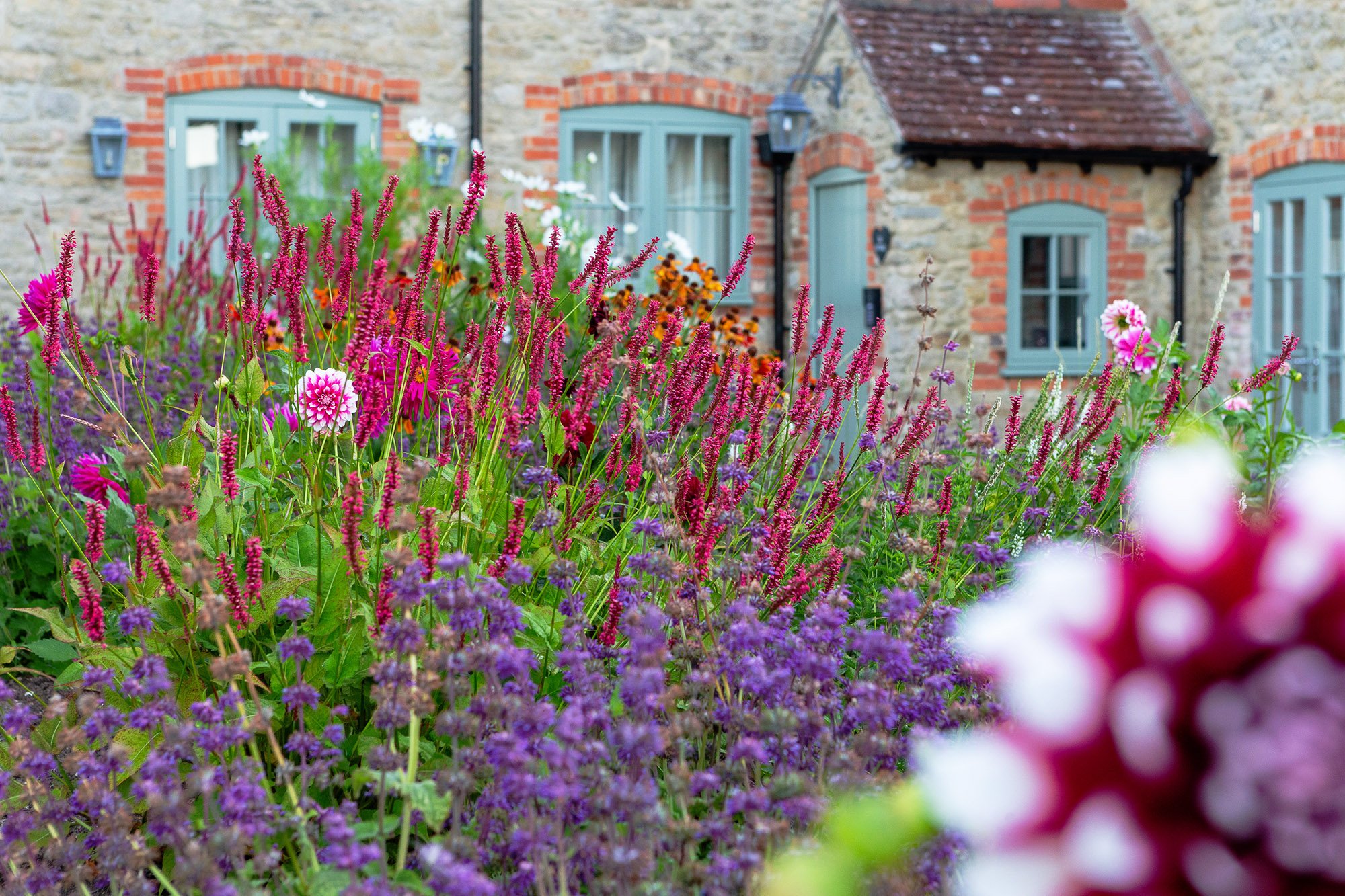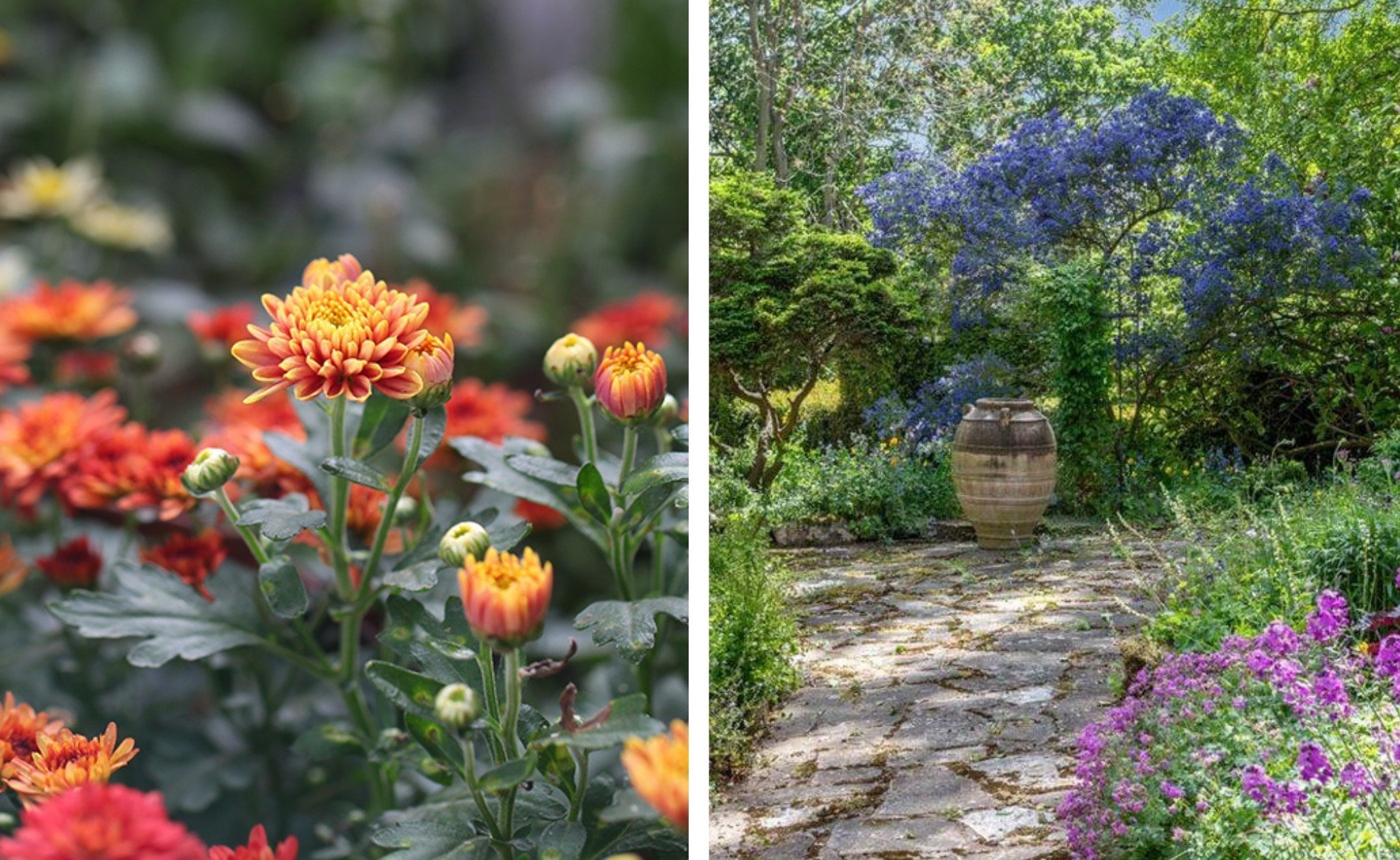
It’s Planting Season!
Yes, you’ve read that right – and, no, we haven’t lost the plot! While most of us associate spring with the busiest time for planting seeds, taking cuttings and bringing on the tender annuals for a colourful summer display, autumn is an important season in its own right when preparing the garden for next year’s bounty. As shrubs and perennials begin to die back in preparation for winter’s dormant period, October and November are among the best months for splitting and moving plants, as well as for establishing spring bulbs and planning new displays.
Mature tree planting
Generally speaking, the older a tree is, the trickier it is to relocate it. Taller specimens will have bigger root systems and, once removed from the soil, they can go into a state of shock, making them vulnerable to disease. Deciduous trees discard their leaves at the end of summer and use the autumn months to acquire sufficient nutrients to see them through the barren winter months. These trees will continue to root slowly – so long as it’s not too cold – and can be successfully planted right through to spring.
Evergreens don’t fare so well when planted in colder conditions; it’s best to re-home these trees in early autumn to take advantage of the autumn rooting spurt, rather than in winter when they can go into a sulk. As a rule of thumb, move evergreens when they’re on the rise, not when they’re shutting up shop for winter. Be aware that soil and environmental conditions will always have a part to play. For instance, trees in exposed sites – in coastal locations, perhaps – will usually benefit from being planted in spring to avoid the over-winter depletion of food reserves and resilience.
Naturally, we always work with you to create a landscaping scheme that’s exactly right for your garden, but some trees stand out for their versatility, colour and canopy. The Dawn Redwood (Metasequoia glyptostroboides) is simply glorious. It will grow in most conditions, will reach a good height (25m) and is generally pest and disease-free. Flat sprays of slender green leaves turn honey gold and pink in autumn. The more compact (8m) Persian Ironwood (Parrotia persica) has a broad canopy with beautiful peeling bark and leaves that take on a multitude of colours in autumn; tiny crimson flowers appear in early spring. The common Beech (Fagus sylvatica) is a versatile choice, being suitable for pleaching to form avenues, pressed into service as hedging or as a handsome standalone specimen.


Planting spring bulbs
There’s nothing quite like the emergence of the first flowers of spring to herald the beginning of your garden’s reawakening. As long as you plan ahead, you can confidently await a vibrant tapestry of floral displays that can last from February and March right through to early summer.
Daffodils, narcissi, hyacinths and alliums should go in the ground in September or October – they’ll need a big root system to perform at their best so they benefit from a bit longer in the soil. Tulips, however, ought to be left a little later to make sure the first frosts have nixed any tulip blight spores that could be lurking underground. If you have some soil around shrubs and bushes that will be exposed until spring’s growth spurt kicks in, this is an ideal spot for snowdrops and elegant fritillaries. We love the delicate chequerboard petal patterns of the snake’s head fritillary (Fritillaria Meleagris) and the eye-catching drama of the ‘Queen of the Night’ tulip.
Bulbs like crocuses and narcissi look stunning when naturalised in grassy areas – think Wordsworth’s daffodils – while others, like tulips, can create a stunning formal display in parterre-style settings, as well as in grand pots and planters. Choose colour-coordinated tulip collections that deliver maximum impact in even small spaces.

Sourcing from trusted suppliers
We’re committed to sourcing trees and plants from reliable and sustainable supplies. We only select the best nurseries so we can assure you of a healthy landscape. Here is a selection of our hand-picked suppliers:
Award-winning Majestic Trees specialises in mature and character trees of exceptional quality and are a preferred supplier to the RHS. A stock of over 8000 trees on a 27-acre plot can be viewed and personally selected.
New Wood Trees supplies British field-grown small trees from their 35-acre site in South Devon. They offer a selection of more than 90 different varieties.
Ruskins Trees and Landscapes specialises in large trees, shrubs and hedges, from a single specimen to large scale planting. Nursery-grown varieties are supplied either from Ruskins’ native stocks or from selected growers across Europe.
With a reputation for contributing to prestigious European landscape projects – including Trafalgar Square – Civic Trees is a highly sought-after supplier of mature and semi-mature trees.
The arboriculturists at Tree Research collaborate with garden designers, landscape architects and private clients to help select and procure the right trees for every type of project – from modest private gardens to vast parklands.

How can we help you select the perfect trees?
Let’s talk about how we can help you transform your outdoor spaces. Give us a call or submit our get in touch form.
